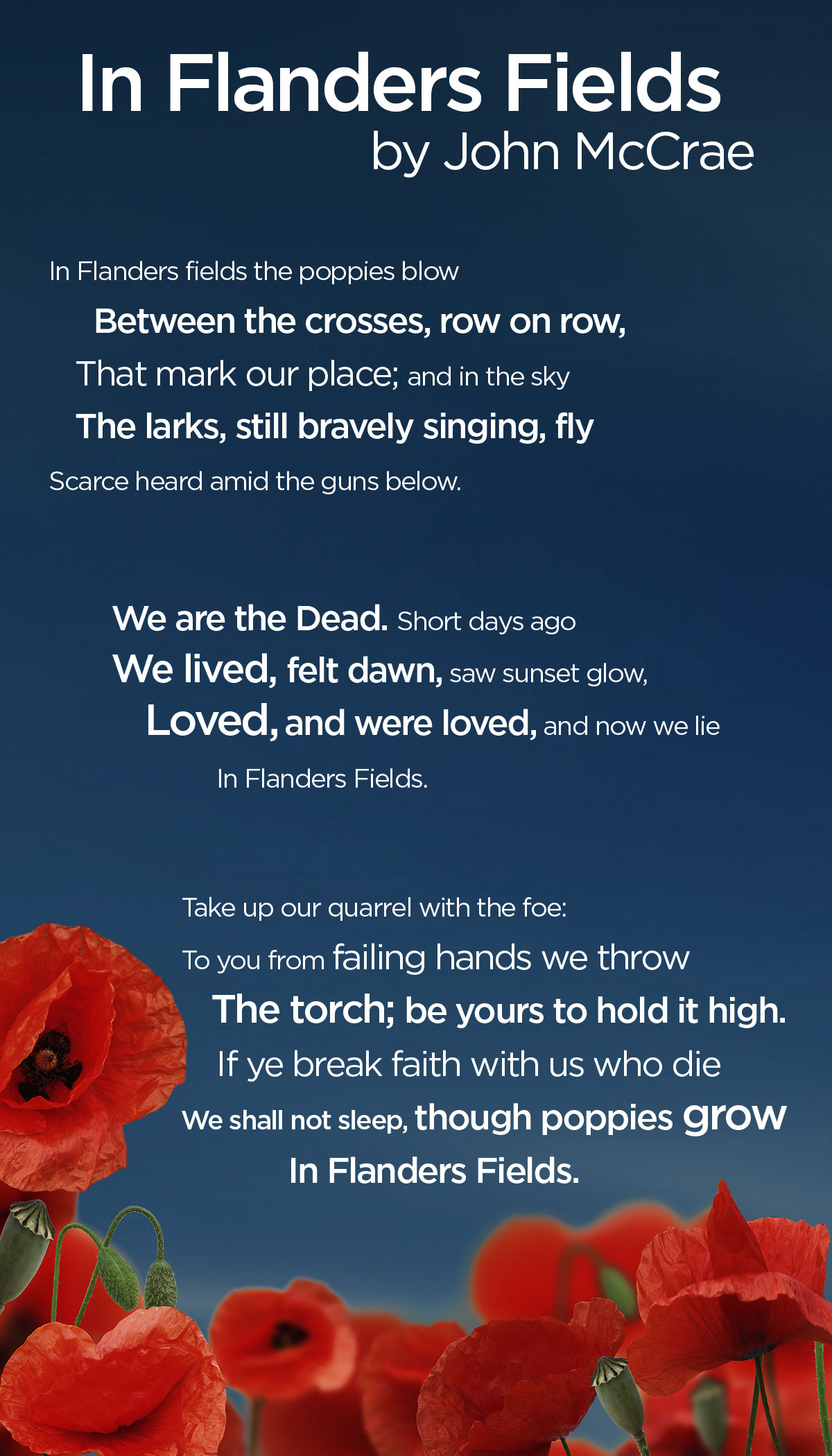Each year, Canadians pin poppies to their lapels to honour those who have died in war. But the Royal Canadian Legion says the crimson symbols are becoming more scarce.

Robert Torrie, president of Edmonton’s Kingsway Legion Branch 175, says he isn’t sure why.
“Whether it’s they think they’re supporting soldiers that go to war, or it’s just apathy.”
WATCH: The story of how the poppy became the official flower of Remembrance Day in Canada. Alan Carter has more.

“We went quite a few years without anybody dying in battle, like we did in Afghanistan, and it was kind of becoming a humdrum, ‘Oh yeah, it’s Remembrance Day. Oh, I should wear a poppy.'”
READ MORE: Remembrance Day 2016 ceremonies in the Edmonton area
Poppies aren’t just a show of respect, Torrie says. The millions raised from poppy donations support programs for veterans and their families.
The poppy became a symbol of remembrance in Canada after John McCrae immortalized scenes of the bright red flowers on the battlefields of Europe in his famous poem In Flanders Fields. The United Kingdom, Australia, New Zealand and South Africa also adopted the emblem.
READ MORE: West Edmonton Mall reverses Remembrance Day hours decision amid backlash
Torrie offers a couple of directions: always wear it on the left, and use the straight pin it comes with.
“Everybody says, ‘well it keeps falling off or the seat belt takes it off,’ and I know the seat belt takes it off,” he explains. “But there are various ways to hold it on. Put a little piece of eraser behind the pin, underneath the lapel, that will hold it on. I see people wearing the little Canada flag, which is wrong.”
“And the poppy is to be worn on the left lapel, or the left-hand side, above your heart — that’s the easiest way to remember.”
Veterans Affairs has more information about Remembrance Day and the poppy, including the 10 facts below.
10 quick facts on the poppy
- The poppy campaign begins on the last Friday in October and continues through to Nov. 11.
- The lapel poppy can be worn every day of the poppy campaign and is removed at the end of the Remembrance Day ceremony. Many people place their poppy on a wreath or at the base of the cenotaph or memorial as a sign of respect at the end of the ceremony.
- The poppy may be worn at commemorative events throughout the year, such as anniversaries of significant battles, a memorial service, and other similar occasions. (Event organizers should seek advice from the Royal Canadian Legion on the use of the poppy for events outside of the poppy campaign.)
- The Royal Canadian Legion suggests that the poppy be worn on the left lapel of a garment and as close to the heart as possible.
- The poppy became widespread in Europe after soils in France and Belgium became rich in lime from debris and rubble from the fighting during the First World War. These little red flowers also flourished around the grave sites of the war dead.
- In 1915, John McCrae, a doctor serving with the Canadian Artillery, famously made note of this phenomenon in his poem, In Flanders Fields.
- On Nov. 9, 1918— two days before the Armistice — Moina Michael was on duty in the reading room at the YMCA Overseas War Secretaries’ headquarters: a place in New York where U.S. servicemen would often gather with friends and family to say their goodbyes before they went overseas. After reading McCrae’s poem, Moina made a personal pledge to always wear the red poppy of Flanders Fields as a sign of remembrance and for “keeping the faith with all who died.”
- In 1920, Anna Guérin—the French Poppy Lady—attended the national American Legion convention as a representative of France’s YMCA Secretariat. She was inspired by Moina Michael’s idea of the poppy as a memorial flower and felt that the scope of the memorial poppy could be expanded to help the needy. She suggested that artificial poppies could be made and sold as a way of raising money for the benefit of orphaned children and others who had suffered greatly as a result of the war.
- In 1921, Madame Guérin visited Canada and convinced the Great War Veterans Association of Canada (predecessor to the Royal Canadian Legion) to adopt the poppy as a symbol of remembrance in aid of fundraising, which it did on July 5 of that year.
- Today, the poppy campaign is one of the Royal Canadian Legion’s most important programs. The money raised from donations provides direct assistance for veterans in financial distress, as well as funding for medical equipment, medical research, home services, long term care facilities and many other purposes.
Visit the Legion website to learn more about the poppy campaign, make a donation and learn what the money goes toward.





Comments